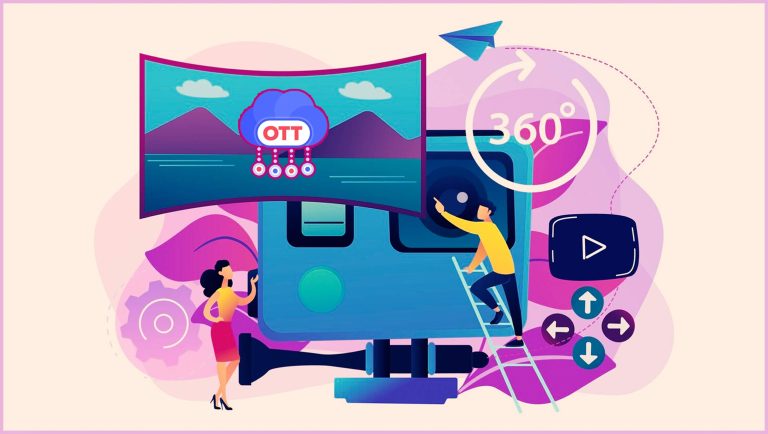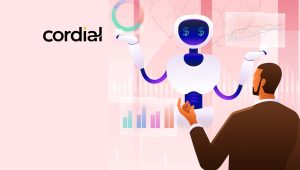
Neta Agmon
Director of Product, Cloudinary
Video and visual storytelling are inter-connected and make personalization campaigns more effective. There are many vital components in delivering a flawless video experience across channels. Neta Agmon, Director of Product, Cloudinary, reveals more about Video Management and her team’s work with Digital Asset Management.
Tell us about your role at Cloudinary and the team and technology that you handle.
I’m a director of product at Cloudinary, managing our newly launched Digital Asset Management solution. We view this solution as a completely reimagined DAM designed to help brands better manage their media assets and ultimately end-user experiences. Cloudinary is unique because we started as a solution for developers, and our strong community of 325,000 developers has been instrumental in making our platform as comprehensive and innovative as it is today. We are thrilled to now bring our asset management capabilities to marketers and creatives, and we see great value in having all teams collaborate on the same system. We know that people prefer media over text. We know that media drives engagement. And delivering these media-rich experiences creates an inherent tension for those tasked with the challenge of managing and delivering these assets quickly, optimally and consistently — whether the viewer is browsing a website on his PC or using an iPhone app. I love that I play a role in building the solutions and capabilities that help our customers improve their own customers’ digital experiences.
What is the state of Digital Asset Management in 2018?
I think it’s an exciting time for the DAM market. It’s a market that has evolved and matured quite a bit over the last few years, but we believe we’re at a point of major reinvention. Brands understand that visual storytelling is critically important to improved customer engagement. Marketers need robust tools to manage a growing number of rich media assets with increasingly complex workflows, while supporting seamless and organized collaboration across internal stakeholders and external partners. Of course, they also need the ability to easily distribute that dynamic content across multiple web and mobile environments. What’s more, technologies like AI and machine learning are allowing us to add a layer of intelligence that’s just going to make managing these business critical assets that much easier — and as asset volumes (and types!) continue to increase, companies simply won’t be effective without them.
What are the core tenets of your Video Management Platform?
Our end-to-end video solution, which shares the same interface as our image management solution, supports a complete video management workflow and handles everything from on-the-fly transcoding and manipulation to adaptive delivery, regardless of device, resolution or bandwidth constraints. Our automated video management workflows use AI algorithms, such as auto tagging and auto transcript. This offers a unique combination of technical capabilities (like cropping or transcoding) with intelligent content analysis. And because we utilize multiple CDNs, like Akamai, Fastly and CloudFront, content is delivered quickly, consistently and reliably.
How do you work with Data Science and AI/ML for better digital asset management?
Our AI capabilities include automatically tagging assets based on the content of an image, and extracting visual content such as colors, objects and faces. These are leveraged to provide AI-powered search with tags and other attributes — relevant assets can be found easily with no manual work required, and our UI makes it easy to browse assets as thumbnails and then if needed further refine the search with additional filters, including content, type, size, and format. We also use AI-based content identification methods to provide automatic moderation capabilities for user-generated content, and for optimization of the end-user experience, as part of our on-the-fly manipulation capabilities, we provide content-aware cropping to make sure images look good in any proportions on any device.
Tell us more about your Image Optimization technology and how it helps website management teams to deliver better UX?
Images can have a significant impact on web page load times, which in turn affects user experience, as well as page views and conversion. Cloudinary’s image optimization technology dynamically determines and delivers every image in the most efficient format, in the optimal quality and encoding settings, and in the best matching resolution and pixel density. For example, we optimize the trade-off between file size and image quality by tuning the encoding settings and selecting the best format based on the image content and the viewing browser. Eventually, the file size is significantly reduced with virtually no difference noticeable to the human eye.
What kind of integrations and add-ons do you offer to Cloudinary customers?
Our extensible APIs and webhooks make it easy to integrate with applications, such as CMS, product information management (PIM) systems, and project management tools, enabling a connected journey: from asset creation and organization to manipulation to delivery. Our customers can also leverage built-in integrations with popular platforms, including Magento and Salesforce Commerce Cloud and Heroku, enabling a fully connected workflow. We also offer an add-on marketplace that supports advanced 3rd party manipulation capabilities, (e.g. Amazon Rekognition, Microsoft Cognitive Services, Google Vision) eliminating the tedious work of manually analyzing media content and allowing users to automatically categorize images or videos as part of their existing image management workflow.
How does the celebrity detection tool work?
Cloudinary provides an add-on for Amazon Rekognition’s automatic celebrity tagging and face detection capabilities, which recognizes thousands of celebrities in a wide range of categories, such as entertainment and media, sports, business and politics. Because the technology is fully integrated into Cloudinary’s image management and manipulation pipeline, images are automatically tagged according to the celebrities detected. Amazon Rekognition’s deep learning-based image recognition allows you to search, verify and organize all your images, with outstanding performance and a very high precision rate.
Thanks for chatting with us, Neta.
Stay tuned for more insights on marketing technologies. To participate in our Tech Bytes program, email us at news@martechseries-67ee47.ingress-bonde.easywp.com
























